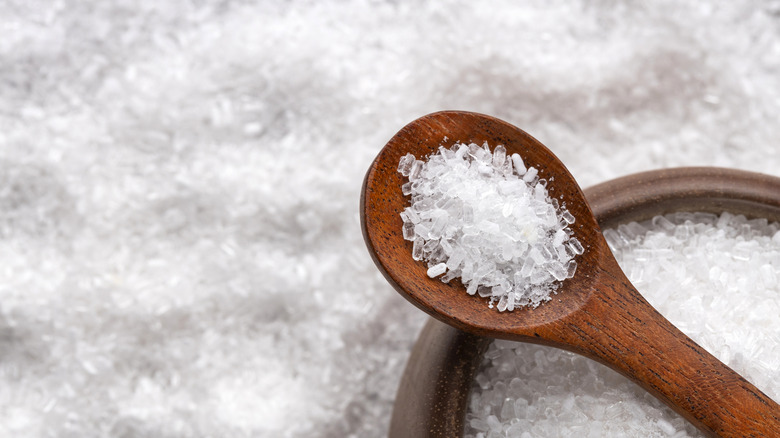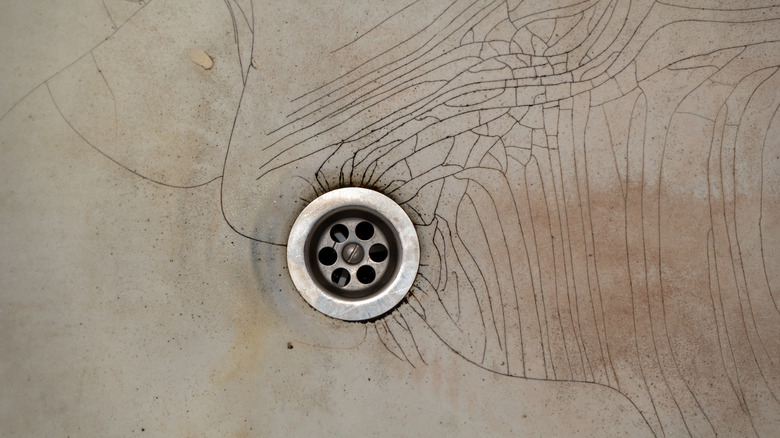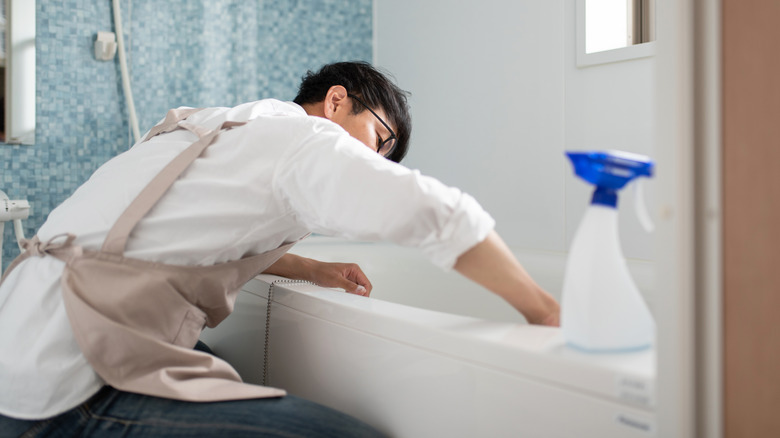The Epsom Salt Cleaning Hack You Should Never Try In The Bathroom
Epsom salt has earned a bit of cult following in the cleaning world. You'll find it in cleaning recipes on Pinterest boards and TikTok videos alike, hailed as the magic crystal to revive your bathroom. There are many ways to use Epsom salt to refresh the bathroom. People toss it in toilets, sprinkle it into showers, and mix it into homemade scrubs for tiles and grout. And while it may do wonders for your drains or your stainless-steel faucets, Epsom salt has no business anywhere near acrylic tubs, which happen to be a major feature in modern bathrooms. That's where this "harmless" cleaning hack becomes a very costly mistake.
This isn't because Epsom salt is dangerous, but because it's misunderstood. It doesn't belong everywhere, and using it blindly — without considering the material underneath — can backfire fast. So, before you jump on every cleaning trend that pops up online, it's worth asking: What's this going to cost my bathroom in the long run?
Why Epsom salt is not safe for your acrylic tubs
Epsom salt is gritty enough to scrub away buildup. But when it comes to acrylic tubs, the same grit is exactly the problem. Acrylic surfaces are known for their sleek, glossy finish, but they're also notoriously prone to scratching. It doesn't take much. Just a sponge and a few tablespoons of coarse salt, and that smooth surface can quickly become dull and damaged.
Most of the problem boils down to the crystalline texture of Epsom salt. While it's great for exfoliating or scrubbing tougher surfaces, it acts like sandpaper on acrylic. Even a single use may leave behind fine scratches that, besides being unsightly, are perfect for holding soap scum and mineral deposit stains. Over time, those scratches deepen, making the tub harder to clean and ruining the finish you paid for. And unlike ceramic or cast iron, acrylic doesn't forgive. Once scratched, you'd likely need specific products and professional help to fix the issue. So avoid these cleaning mistakes for your reglazed tub to prevent costly damage.
Safe cleaning alternatives for acrylic tubs
For the easiest ways to clean your bathtub without scratching the surface, ditch the abrasives and stick to gentler options that get the job done without the long-term damage. First up, consider white vinegar and warm water. Mix them in a spray bottle, and you've got a powerful natural cleaner that cuts through soap scum and water spots with ease. Spray it on, let it sit for a couple of minutes, and then wipe it down with a soft cloth.
For deeper cleans, try a paste made from equal parts of baking soda and vinegar. Apply it directly to the problem areas and wait for 15 to 20 minutes. Once you get that satisfying fizz, scrub it with a soft sponge. Then rinse thoroughly with warm water. These combinations are gentle enough for acrylic, tough enough for build-up, and most importantly, won't leave you with a damaged finish.


